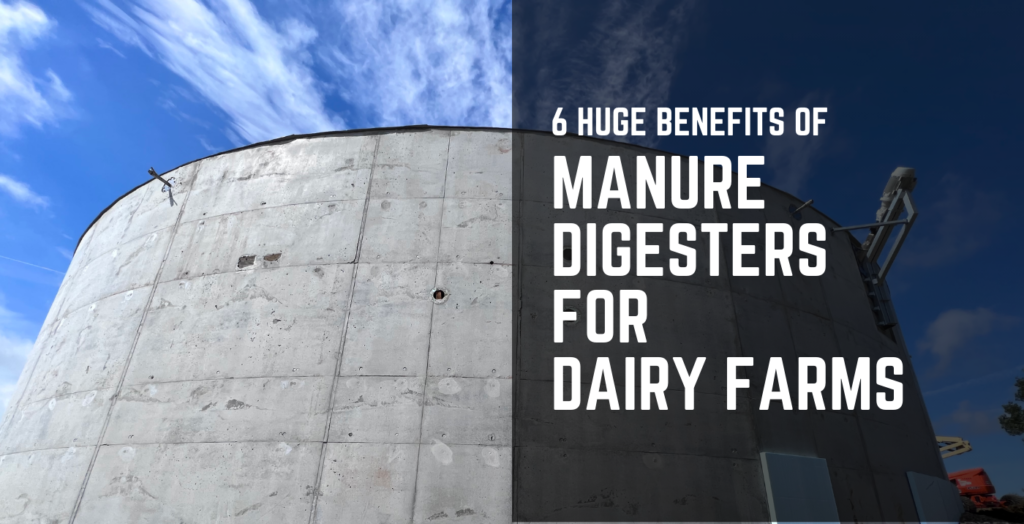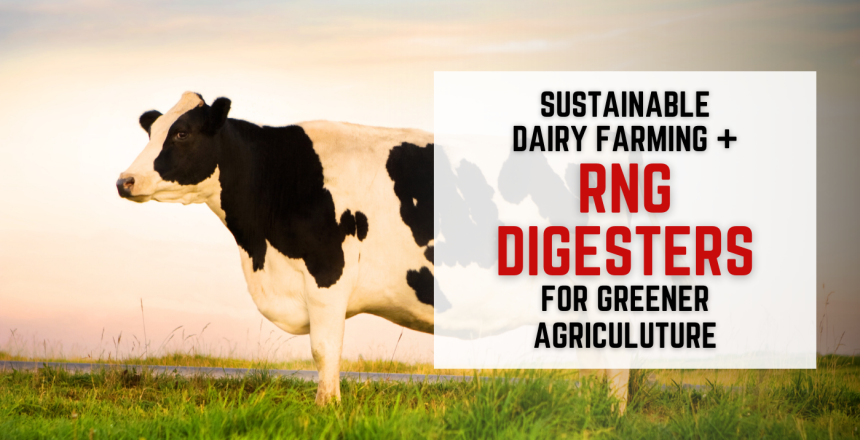Over the past half-century, farming has focused on specialization in order to scale production. The results have been substantial, with record-setting crops and livestock yields as the proof. But since the 1990s, these methods have hit a plateau.
And as yields increased, negative environmental impact also increased. But with diminishing returns in production and increasing pressure to find green alternatives to conventional methods, farmers are looking both back in time and forward in technology. Sustainable dairy farming is the future of agriculture, and modern advancements will make it possible.
What Is Sustainable Dairy Farming?
Dairy farming has a bad reputation: environmental impact, upkeep costs, and water usage are all concerns in conventional dairy farming. Sustainable dairy farming is designed to address these challenges through a combination of traditional techniques and new technologies.
One of the most prominent frameworks for sustainable farming practices is regenerative agriculture. The central tenets of regenerative farming are a commitment to actively healing the environment while prioritizing animal welfare and advocating for the farmer.
Reduced Reliance on Chemicals
Conventional farming relies heavily on chemical fertilizers and pesticides. Sustainable farming, and more specifically regenerative farming, minimizes inorganic chemical use.
Regional Methods
Crop yields can suffer when climate and soil conditions aren’t considered properly. Likewise, regional conditions can alter the methods necessary for caring for livestock. Regenerative and sustainable dairy farming practices take into account local climates to maximize outcomes.
Improved Soil Health
Through crop and pasture rotation, dairy farmers can improve soil health through natural means. Organic fertilizer can also assist in this process by replacing nutrients without artificial chemicals. There is also far less erosion when soil health is prioritized.
Increased Biodiversity
As farming practices shift from clearing land for more crop and pasture use, local biomes will regain ground. That increased biodiversity translates to a healthier environment, better soil conservation, and improved
Why the Need for Sustainable Agriculture?
For many farms, sustainable agriculture is the response to two primary concerns: carbon emissions and stagnating growth in crop yields. There are also benefits in several other areas, including livestock health, fair treatment of smaller farming operations, and fair market prices for goods.
Carbon Emissions
Approximately 23% of all greenhouse gas emissions can be attributed to agriculture, forestry, and other land use. Dairy farms account for less than a tenth of those emissions, but that impact is still a concern. Sustainable dairy farming aims to reduce that percentage dramatically.
Plateaued Increases
The increases in agricultural production once considered normal before the early 2000s are no longer being seen. The input costs, meanwhile, continue to rise. Sustainable agriculture focuses on revisiting traditional farming techniques to reduce input costs and create a less wasteful farming process that produces more sustainable yields over a longer period.
Benefits of Sustainable Dairy Farming
When sustainable dairy farming and regenerative farming practices are implemented, farmers can improve their lands’ overall health while reducing overhead costs year over year. But more than anything, the positive environmental effects drive the adoption of new technologies and practices.
Soil Conservation
Sustainable farming, both for dairy and crops, helps reduce soil stress and erosion by promoting ground cover, crop rotation, and organic fertilizers in place of chemicals.
Environmental Benefits
Dairy farms have a significant impact on the environment, specifically on local and regional ecosystems. By replacing conventional farming methodologies with sustainable dairy farming practices, farmers can redevelop local wildlife habitats, decrease pollution, and improve soil conditions.
Lower Lifetime Input Costs
Although initial costs may be high, regenerative farming practices decrease the lifetime costs associated with cattle care. Additionally, sustainable dairy farming reduces crop-related costs for feed with the use of organic fertilizers when produced from the dairy’s own cattle slurry.

The Future of Green Farming is Here.
See how manure digesters for dairy farms are leading the way to eco-friendly fuel and revenue.
Drawbacks of Sustainable Dairy Farming
Farmers hoping to adopt a sustainable model for their farms may run into drawbacks. It’s important to keep in mind that long-term results are the goal, but initial investments can be significant.
Unfamiliar Techniques
Sustainable farming practices require new techniques, technologies, and strategies. For most farmers, this can be an expensive and time-consuming proposal. Even with the benefits, some dairy farms may be unwilling to take on a new approach.
Decreased Yields
One of the most significant drawbacks of sustainable dairy farming is that liquid milk yields are lower. For regenerative farming in particular, yields typically drop by as much as 50% compared to conventional dairy farming. The cost of this drop in production is balanced by the environmental benefits, but it does come at a cost to the farmers.
Longer Timelines
Conventional farming is designed for fast and easy-to-maintain practices that maximize production. But sustainable farming methods prioritize environmental health. Soil restoration and free-range pasturing are long-term practices, and many farms will take years to establish a sustainable dairy farming paradigm.
The Role of RNG Digesters in Agricultural Sustainability
So how can family-owned dairy farms start working toward sustainable dairy farming practices? If the goal is reducing negative environmental impacts while maintaining revenue, many farms can start with one addition that solves both of these issues: anaerobic digesters.
Anaerobic digesters (also known as manure digesters and RNG digesters) transform cattle slurry and waste into renewable natural gas (RNG) and organic fertilizer. For dairy farmers, this single system can provide safe waste management, clean fuel, natural alternatives to chemicals, and a green energy source. And even better, it’s a clear path to new revenue while working toward a fully sustainable dairy farming practice.
Waste Containment
Slurry pits and lagoons have long been the solution for cattle waste, but they pose dangers to both the environment and the people who maintain them. RNG digesters safely contain waste, including off-gases like hydrogen sulfide and methane. The sealed system reduces the risk of soil and water contamination as well.
Decreased Carbon Emissions
RNG is one of the few carbon-negative energy sources today. It keeps thousands of tons of greenhouse gases from reaching the atmosphere while simultaneously replacing natural gas. Farms that build digesters are actually cleaning the planet, not just preventing further damage.
One Step Closer to Circularity
RNG digesters offer a solution to many of the concerns that dairy farms are facing today. By incorporating soil conservation measures with digesters, farms can come closer to sustainability without sacrificing production. It’s also a faster route to fully sustainable dairy farming than regenerative methods alone.

How does Brooks stand out as the leader in RNG digester construction in South Dakota?
By meeting key challenges with innovative solutions. Find out more here.
Brooks for RNG Digester Construction
Ready to transition to sustainable dairy farming? Contact Brooks to learn more about incorporating RNG digesters into your farming systems. Our expert teams have built more than a dozen digesters in South Dakota, and we’re slated to build even more. We’d love to connect you with our trusted partners to help your farm become more sustainable.



